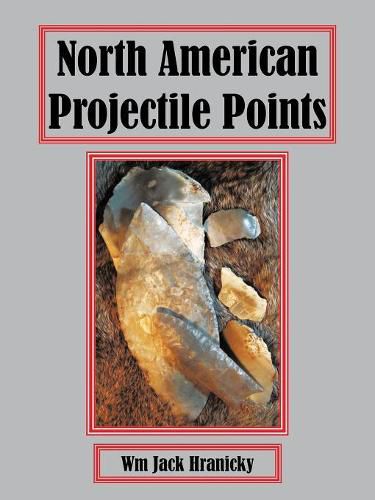Readings Newsletter
Become a Readings Member to make your shopping experience even easier.
Sign in or sign up for free!
You’re not far away from qualifying for FREE standard shipping within Australia
You’ve qualified for FREE standard shipping within Australia
The cart is loading…






This title is printed to order. This book may have been self-published. If so, we cannot guarantee the quality of the content. In the main most books will have gone through the editing process however some may not. We therefore suggest that you be aware of this before ordering this book. If in doubt check either the author or publisher’s details as we are unable to accept any returns unless they are faulty. Please contact us if you have any questions.
This publication provides a single source for projectile points in the literature of American archaeology. Its purpose is to provide a quick lookup for point types; the user then utilizes the basic references that are provided for more research information, point comparisons, data, distributions, similar types, timemarkers, etc. There are nearly two thousand types in this publication. Within American archaeology, there are many forms of investigations, practices, methodologies, ethical standards, varying degrees of expertise, site-context artifacts, field-collected collections, and numerous other factors that apply to projectile point typology and American collections. And then there is the relic/collector world that probably holds more artifacts than any other group in the US. Somewhere in the midst of all this, there is reliable and truthful information about Americas antiquity. For some, archaeology is a compromise among people who study and curate (loosely used for private collection) prehistoric artifacts. Any attempt to produce a single publication on American projectile points will certainly place the writer between scientific archaeology and the proverbial other side of the arrowheadsthe collector world. Justifiably, there are readers who simply want to learn more about the Native Americans material culture and will contribute their artifact finds to the archaeological communitys public record.
$9.00 standard shipping within Australia
FREE standard shipping within Australia for orders over $100.00
Express & International shipping calculated at checkout
This title is printed to order. This book may have been self-published. If so, we cannot guarantee the quality of the content. In the main most books will have gone through the editing process however some may not. We therefore suggest that you be aware of this before ordering this book. If in doubt check either the author or publisher’s details as we are unable to accept any returns unless they are faulty. Please contact us if you have any questions.
This publication provides a single source for projectile points in the literature of American archaeology. Its purpose is to provide a quick lookup for point types; the user then utilizes the basic references that are provided for more research information, point comparisons, data, distributions, similar types, timemarkers, etc. There are nearly two thousand types in this publication. Within American archaeology, there are many forms of investigations, practices, methodologies, ethical standards, varying degrees of expertise, site-context artifacts, field-collected collections, and numerous other factors that apply to projectile point typology and American collections. And then there is the relic/collector world that probably holds more artifacts than any other group in the US. Somewhere in the midst of all this, there is reliable and truthful information about Americas antiquity. For some, archaeology is a compromise among people who study and curate (loosely used for private collection) prehistoric artifacts. Any attempt to produce a single publication on American projectile points will certainly place the writer between scientific archaeology and the proverbial other side of the arrowheadsthe collector world. Justifiably, there are readers who simply want to learn more about the Native Americans material culture and will contribute their artifact finds to the archaeological communitys public record.